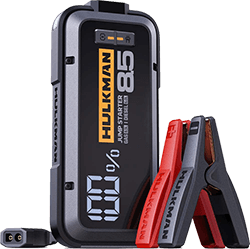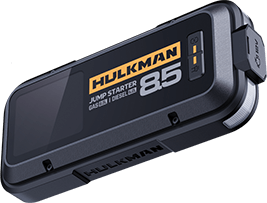Recent Articles
-
Understanding Lithium Battery Charging: Principles, Challenges, and How Hulkman Mega Engineers a Smarter System September 29, 2025
-
What Are Lithium Battery Cycle Counts and How to Extend Them? September 25, 2025
-
How to Properly Care for Lithium Battery Products September 24, 2025
Featured Products
note
How to Properly Care for Lithium Battery Products
Lithium batteries power many of the devices we use daily, from smartphones and laptops to power tools, portable power stations, and drones. Keeping them in good condition maximizes their lifespan and safety.
In this article, we’ll cover:
- What Everyday Devices Use Lithium Batteries
- How to Care for Lithium Batteries
- Emergency Handling When Lithium Batteries Go Off the Rails
- Environmentally Responsible Recycling
- Mega Power Station Worry-Free Service
- Final Thoughts
What Everyday Devices Use Lithium Batteries
Typical electronics you may have that use lithium-ion or lithium-polymer batteries include:
- Smartphones, tablets, laptops
- Digital cameras, action cams, drones
- Portable power stations / battery packs
- Power tools (drills, saws, etc.)
- Wearables (smartwatches, fitness trackers)
- Knowing what equipment you have is first step toward good maintenance.
How to Care for Lithium Batteries
- What You Should Do
Keep charge between about 20-80% rather than fully draining or fully topping up all the time. Smaller discharge cycles are gentler.
From Battery University (BU-808: How to Prolong Lithium-based Batteries): They show that the depth of discharge (DoD) has a large effect—smaller discharges (less full usage) dramatically increase the number of cycles the battery can handle before its capacity falls to 70%. For example, Li-ion cells cycled at 100% DoD might get ~300 cycles; at 20% DoD they can get ~2,000 cycles or more
Avoid extreme temperature exposure. Store and use batteries at moderate temperatures (roughly 0-35 °C / 32-95 °F). Cold and heat both accelerate aging.
Use the correct, certified charger. Matching voltage and current with manufacturer recommendations reduces strain.
Store unused batteries at ~40-60% charge in a cool, dry place. If you leave them fully discharged, they may not recover well.
From Budget Light Forum on long-term storage of 18650 cells: users report that “40% is the recommended state for long term storage, unused … I store mine at around 50% … Anywhere between 40-60% is cool … for long term storage.”
From EMTB Forums (electric mountain bike battery storage discussion): “Storing them cold, at 40% charged will prolong their life. Must be warmer then 0 °C to discharge or charge though.”
- What to Avoid
Letting the battery drop to 0% often
Overcharging / leaving device plugged in constantly after full charge
Charging or using when very cold or very hot
Using non-original chargers or damaged cables
Exposure to moisture, direct sunlight, or physical damage
Emergency Handling When Lithium Batteries Go Off the Rails
If a lithium battery shows signs of serious malfunction—overheating, swelling, smoking, leaking—the following steps (and lessons from real customers) can help avoid danger.
- Immediately disconnect from its charger and cut off power
- Move the battery to a safe space—non-combustible, away from flammable materials
- If it’s ventilating gas or swelling, allow it to cool; don’t touch any leaking material
- Do not try to repair or open it yourself
- Use first-aid and fire safety protocols: for overheated batteries, some guidance suggests using Class D or dry powder fire extinguishers.
- Once cooled, dispose properly (see recycling/disposal below)
There are somer real customer experiences:
Swollen Battery in a Sony Camera:” I have a Sony camera which uses a lithium battery model NP-BX1. When I went to place the battery into the charger it would not fit. Upon close inspection I see that the battery is swollen. I plan to dispose of it.” (Bob Is The Oil Guy Forum) This illustrates how swelling may be your first visible sign—bulging casing, battery not seating properly.
Overheating Battery in a Chainsaw:“ These batteries are overheating after less than 20 minutes of use in my chainsaw. Is this expected in summer weather? I ran this for much longer in the winter with no issues.”(Reddit) This story demonstrates that devices under load can rapidly overheat, particularly when environmental cooling is reduced (e.g. summer or limited airflow).
Environmentally Responsible Recycling
Don’t throw lithium batteries in your regular trash—many jurisdictions classify them as hazardous waste.
Use certified drop-off or take-back programs (many retailers or municipal centers offer them).
Tape terminals before disposal to prevent short circuits.
If a battery is damaged (swollen, leaking), handle with care, and deliver it to centers that accept damaged batteries.
Mega’s Worry-Free Customer Service
To make caring for your battery easier, Mega offers:
- A global 24-hour online support team, so you can get advice whenever you need it
- A connected app via Bluetooth and Wi-Fi—you get instant guides, usage tips, firmware updates, and a live Q&A section
- A solid 5-year warranty—because good design plus support gives peace of mind
Final Thoughts
Taking good care of your lithium batteries means doing small things regularly: avoiding extreme temps, using correct chargers, partial recharges, watching for warning signs.
If something goes wrong, act carefully and use proper emergency procedures. For users of power stations and other high-use devices, Mega power station approach adds extra layers of support and assurance. A well-maintained battery lasts longer, performs better—and is much safer.
Learn more and use exclusive code "TNZG4NC7" at checkout to save $200!























